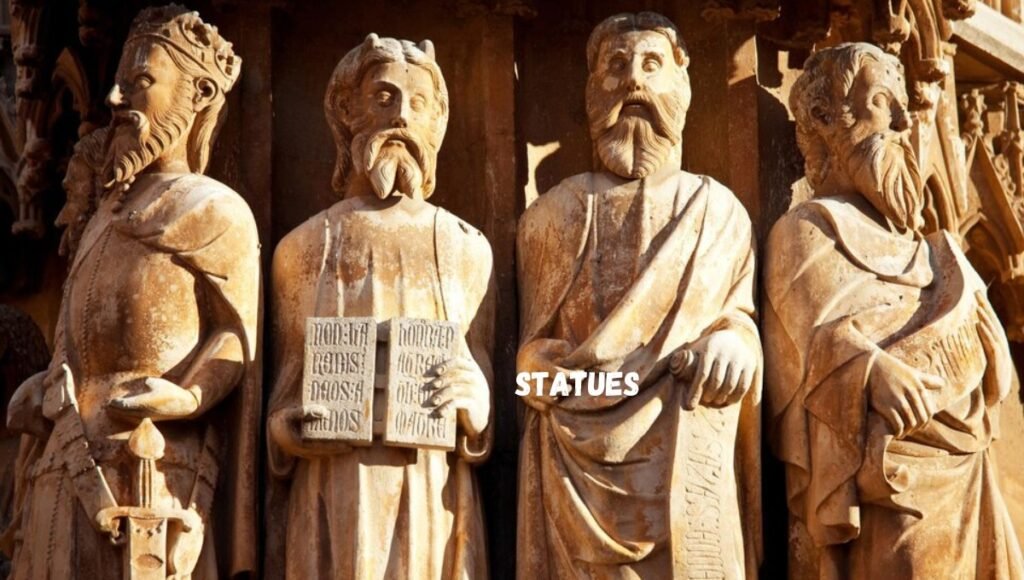Statues have been integral to human civilization for millennia, representing culture, religion, politics, and art. These sculptures are more than just decorative pieces; they often carry profound historical and cultural significance. In this article, we will explore the importance of statues, their history, various types, materials used, and their role in modern society.
The Historical Significance of Statues
Statues have played a vital role in various civilizations, from ancient Egypt and Greece to the modern world. In ancient times, statues were often created to honor gods, rulers, and heroes. For example, the Egyptians created statues of pharaohs to ensure their legacy in the afterlife, while the Greeks crafted lifelike statues to celebrate human achievement and beauty. These statues offer a glimpse into the values, beliefs, and customs of societies long gone. They are windows to the past, immortalizing events and individuals for future generations.
Types of Statues and Their Symbolism
There are various types of statues, each carrying unique symbolism. Religious statues, such as the Buddha or Christ, serve as spiritual reminders and are revered in worship. Political statues, like those of Abraham Lincoln or Winston Churchill, commemorate leadership and inspire future generations. Artistic statues, such as Michelangelo’s David, showcase the creative genius of artists and symbolize human potential. Each type of statue serves a different purpose but ultimately reflects the values and ideals of the society that created it.
Materials Used in Statue Making
Statue making has evolved over time, but some materials remain staples in sculpture art. Marble, bronze, and stone have been used for centuries due to their durability and beauty. Bronze statues, for example, are resistant to the elements, making them ideal for outdoor monuments. Marble has been favored for its smooth texture and ability to capture fine details. In modern times, artists and sculptors also experiment with materials like glass, wood, and steel. The choice of material not only affects the statue’s appearance but also its longevity and preservation.
The Role of Statues in Modern Society
In contemporary society, statues still hold cultural and political importance. Public statues often serve as memorials, honoring historical figures or significant events. However, they are also subjects of debate. In recent years, there have been discussions about the appropriateness of certain statues, especially those representing controversial figures. Some advocate for the removal of statues tied to oppressive histories, while others argue for their preservation as reminders of the past. This ongoing debate highlights the powerful role statues play in shaping public memory.
Famous Statues Around the World
Some of the most famous statues are recognized globally and have become landmarks. The Statue of Liberty in New York, for example, symbolizes freedom and democracy. In Rio de Janeiro, Christ the Redeemer stands as a representation of faith and compassion. Meanwhile, the Great Sphinx of Giza, one of the oldest statues in the world, remains a symbol of ancient Egyptian grandeur. These statues not only attract millions of visitors but also stand as enduring symbols of human achievement and cultural identity.
Caring for and Preserving Statues
Preserving statues, especially those that are centuries old, is a challenge faced by curators and conservators. Weathering, pollution, and vandalism can all contribute to the degradation of statues, making their upkeep essential. Restoration efforts often involve cleaning, repairing damaged sections, and applying protective coatings to prevent further wear. Proper care ensures that these statues remain intact for future generations to appreciate and learn from.
Conclusion
Statues are powerful representations of human culture, history, and art. From ancient civilizations to modern societies, they reflect our values, beliefs, and achievements. Whether serving as memorials, artistic expressions, or cultural landmarks, statues continue to inspire, educate, and provoke thought, reminding us of our shared heritage and the stories that shape our world.
FAQs about Statues
1. What is the oldest statue in the world?
The oldest known statue is the “Lion Man,” carved from mammoth ivory approximately 40,000 years ago. It was discovered in a cave in Germany.
2. Why are statues important?
Statues serve as cultural and historical markers, commemorating significant figures, events, and ideals. They help preserve a society’s legacy and offer a physical representation of its values.
3. What materials are commonly used to make statues?
Common materials include marble, bronze, stone, and wood. Modern statues may also be made from steel, glass, and other innovative materials.
4. Can statues be restored if damaged?
Yes, statues can often be restored using specialized techniques such as cleaning, patching, or replacing damaged sections. However, the restoration process requires expertise to preserve the original integrity of the piece.
5. Why are some statues controversial?
Some statues are considered controversial because they represent figures or events tied to oppression, colonialism, or racism. Debates around their removal often revolve around historical interpretation and public memory.
By understanding the significance of statues, we can appreciate their role in preserving culture, history, and art for future generations.


